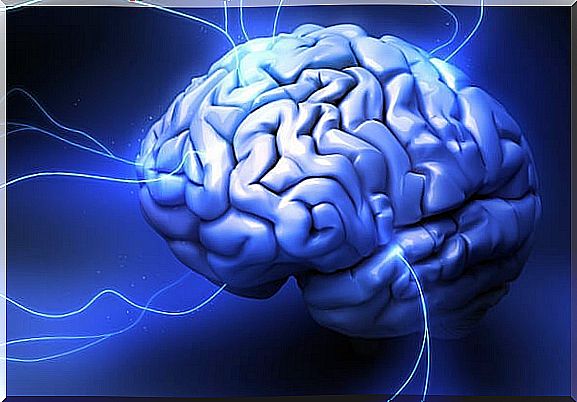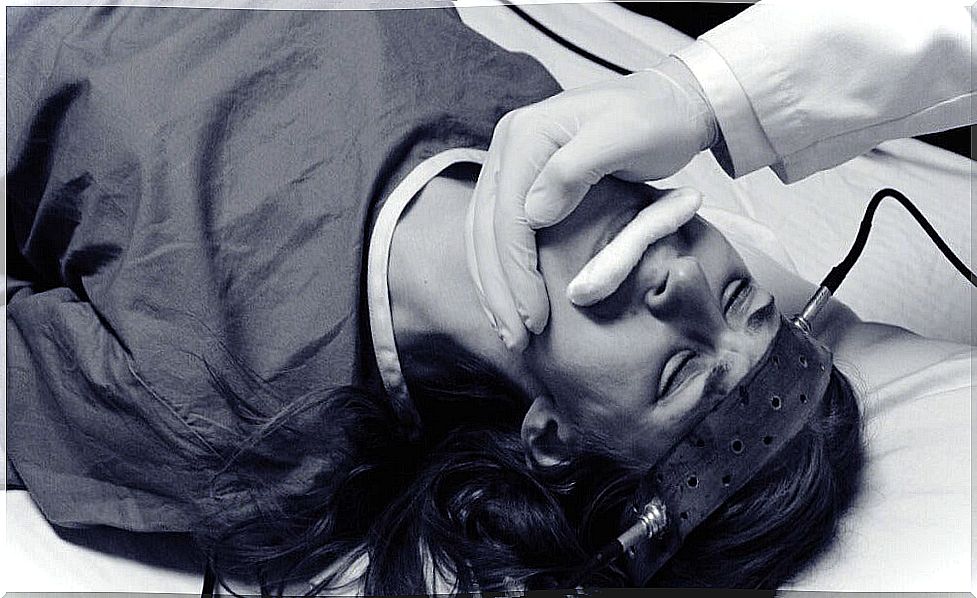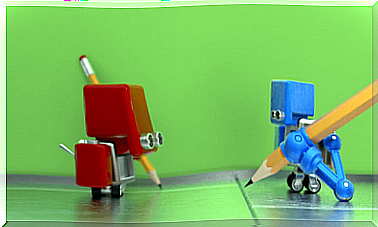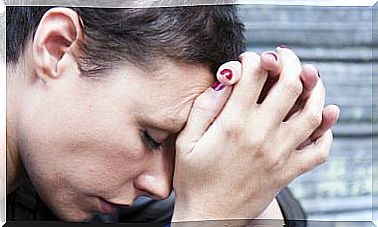Shock Therapies: Benefits And Risks

The shock therapy label encompasses different therapies that are very different from each other. What they have in common, as the name suggests, is that they have a strong impact. We are talking about a stimulus that must be able to induce a change in the person exposed to it.
Apparently, it was the ancient Greeks who first experimented with shock therapy. It is known that they applied different types of therapies to those people who presented a high state of agitation. There are references that tell us that anxiety states, for example, were treated by inducing “drowning”. Hence the questionable principle that a strong emotional experience is capable of erasing a previous problem was established.
Shock therapies themselves come from psychiatry. Insulin shock and cardiazole therapies were instituted first. It was the neurophysiologist Manfred J. Sakel who postulated that the overdose of these substances caused improvements in psychiatric patients, especially those diagnosed with schizophrenia. We were in the 30’s.
Electro-shocks were introduced later, a highly controversial type of treatment, but striking as it is, it is still used today. However, the mechanisms by which they are carried out today are less invasive and more sophisticated. In fact, as we will see below, they are effective in the treatment of chronic depressions that do not respond to ordinary treatments.
Some history on shock therapy
It is not easy to assess the relevance and efficacy of shock therapies. It is clear that when a person undergoes an experience that borders on the traumatic , obviously they have to change. The question is whether this change really solves the problem to be corrected or if, if it does, this change is lasting.

There are several controversial aspects to the history of shock therapy. They began to be used formally to treat mental illness in the 16th century. The data that support its efficacy are not very reliable, since this information was never systematized or treated in a strictly scientific manner.
Insulin shock therapy
Manfred J. Sakel, a Polish-Austrian neurophysiologist and psychiatrist, developed in 1933 a way to calm psychotic patients: by overdosing on insulin. This caused them to go into a coma, but later he revived them by administering a solution through a nasogastric route. The result, according to the specialists of the time, was encouraging.
- However, only a few years later this type of therapy ended up being put aside due to clear evidence: more than 80% of people died.
- Ladislaus von Meduna, a Hungarian doctor, decided to devise another type of strategy: he combined insulin with cardiazole. Death rates weren’t that high, yet the seizures patients suffered were so extreme that the vast majority ended up with injuries and severe bills.
Electroconvulsive therapy
Later, Ugo Cerletti, an Italian neurologist, made a curious observation. He found that the pigs were applied electricity to make them more docile before taking them to the slaughterhouse. There he had the idea that a similar practice could be applied to humans. Insulin and cardiazole were no longer necessary.
Thus, and in this dark context, the controversial electroconvulsive therapy was born, first introduced in 1938.
Benefits and risks of shock therapies
There are documented cases in which these shock therapies caused permanent damage or cardio-respiratory arrest in the not too distant past. In other words, they can lead to death. There are also references from people who have been left in a vegetative state after these procedures.
However, as psychotropic drugs progressed in effectiveness, this type of approach was losing strength until it was largely abandoned. However, it should be noted that there is an exception. To this day, electroshock is still used in a different way, through other mechanisms and for the treatment of a series of very specific conditions.
Electroconvulsive therapy in the treatment of depression
In studies such as the one published in the 2006 journal “Psychiatry” , the effectiveness of this type of therapy in the treatment of deep depression is discussed.
There are a good number of people in the world who claim to have benefited from these procedures. Likewise, from the Bellvitge de L’Hospitalet de Llobregat University Hospital, in Catalonia, they have also shown their usefulness in patients with this type of more resistant depression.
Likewise, the application of this type of therapy is safe and effective (always following current anesthesia protocols).

Shock therapies and psychology
Now there is a form of shock therapy that is much more harmless. They are used primarily by psychologists to treat phobias. What is involved in this case is to expose the patient, directly, to their own fears. They are pressured to do so, but at the same time they are accompanied.
Those who have been treated with this type of therapy report that they come to experience true agony before exposing themselves to the fear that torments them.
However, when they succeed and do not escape, the opposite occurs. They are filled with well-being and great self-confidence. In general, if we talk about shock therapy – there is also progressive exposure – they only need to do it once for the phobia to disappear .

As in all things human, in this case too the last word cannot be said. In psychology there is nothing that can be considered as absolute truth. Every person is a world.
What is beneficial for someone could be disastrous for someone else . So neither shock therapies nor other types of treatments should be decided without a thorough evaluation of the case to be treated beforehand.









